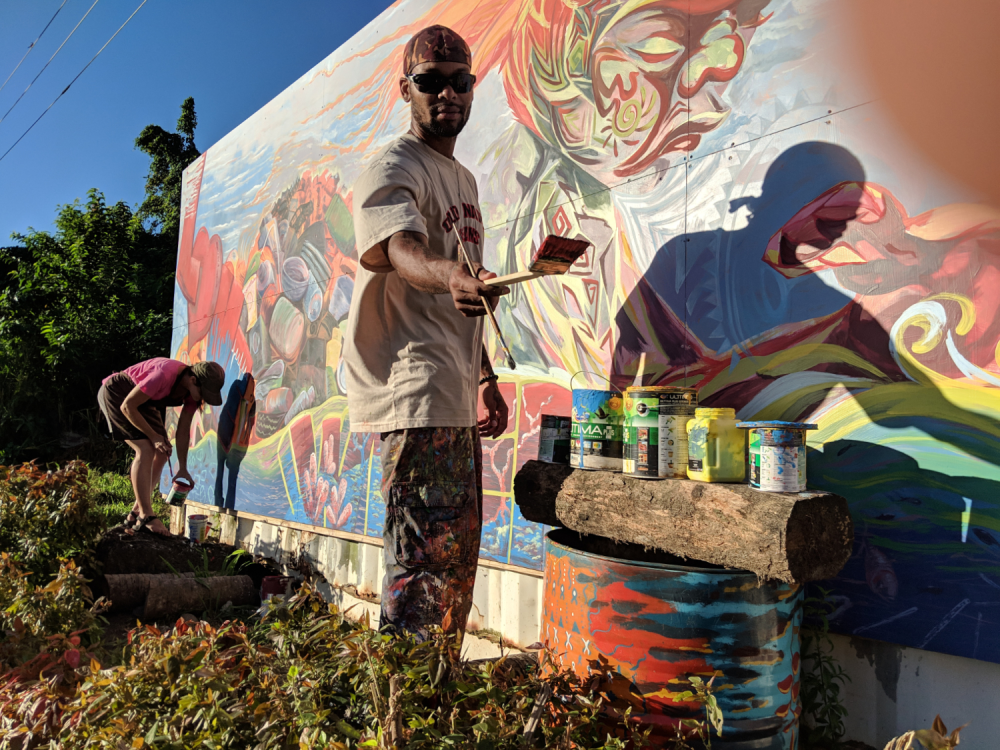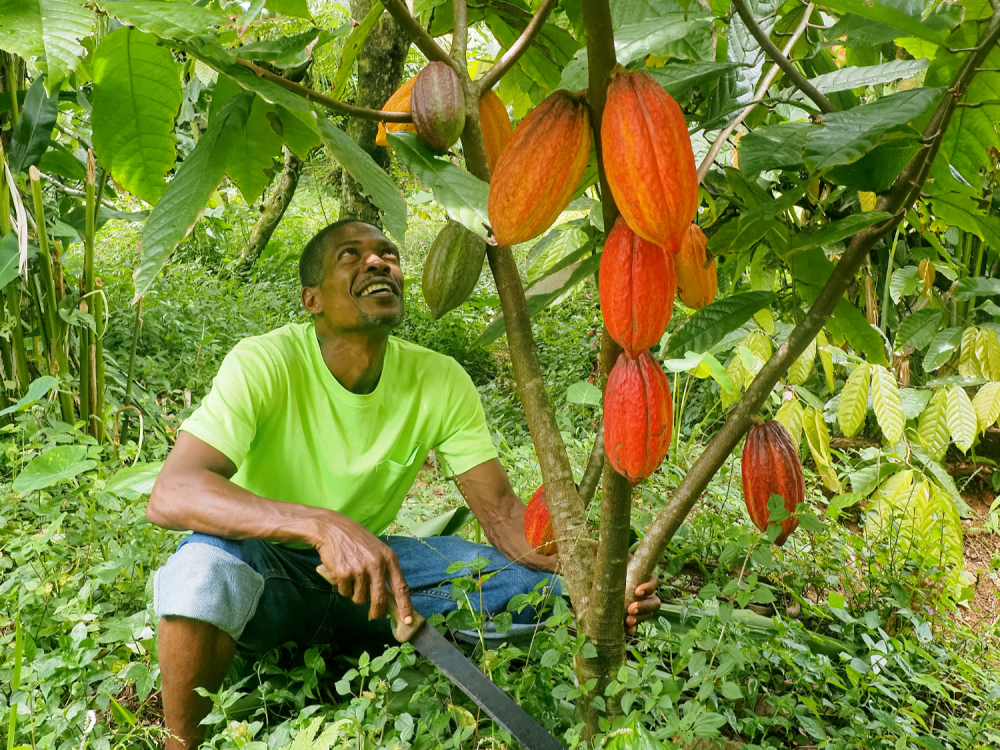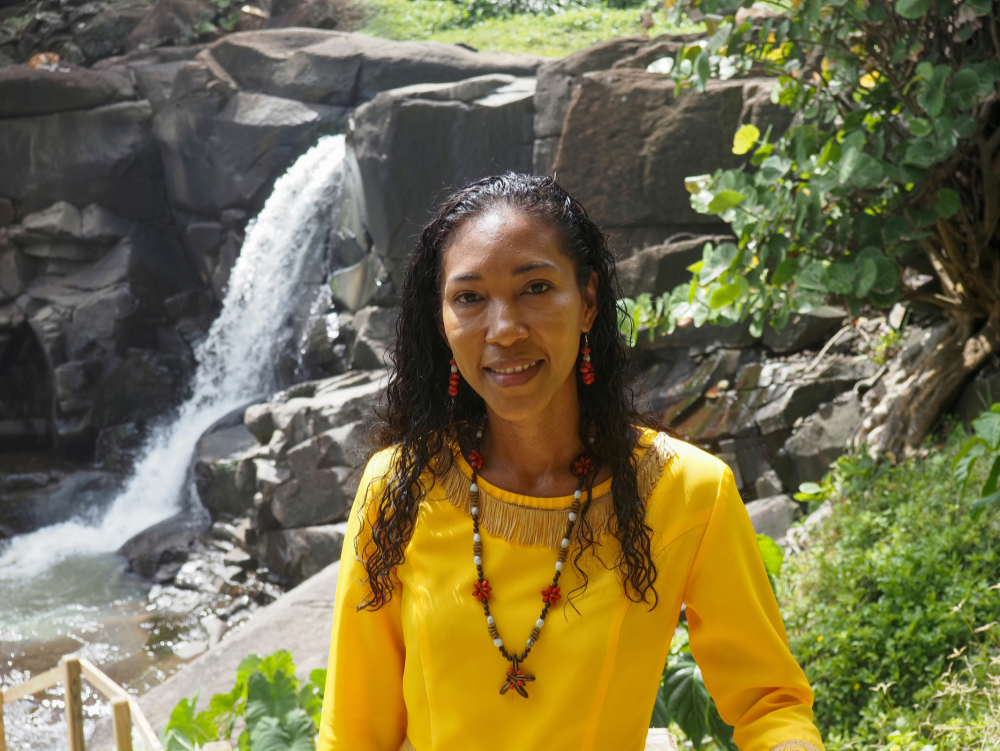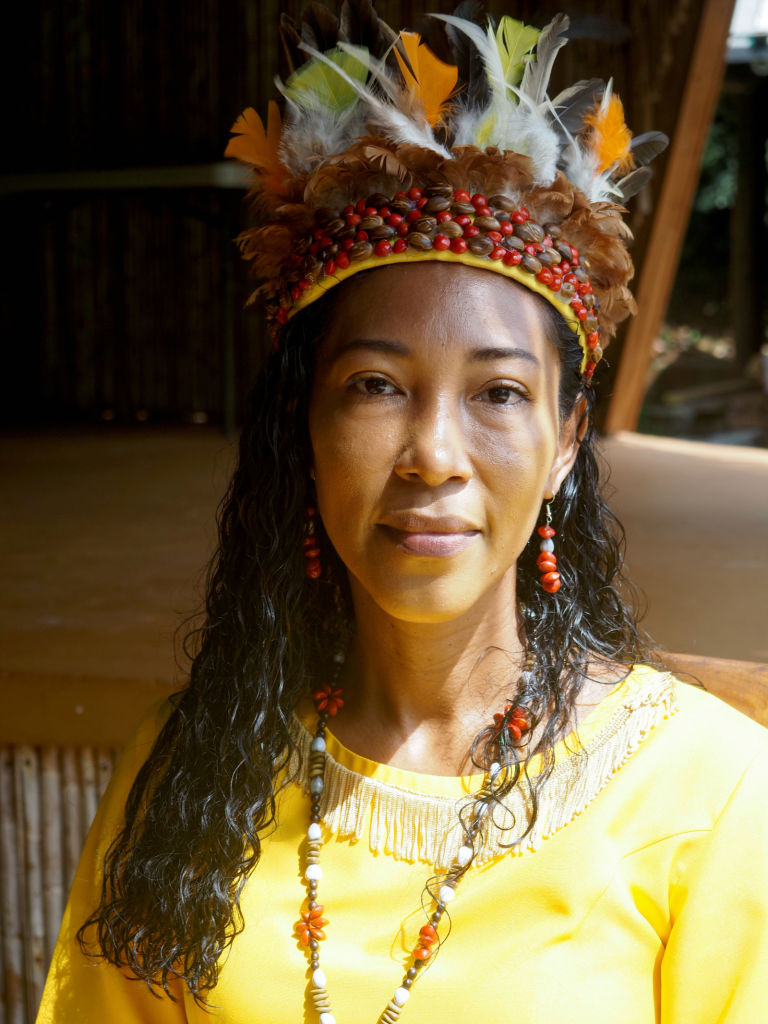The Waitukubuli Artist Association (WAA) – named after the indigenous Kalinago word for Dominica – is a collective of more than ninety artists working across a wide range of disciplines – from painting and photography to sculpture and performance arts. The association was founded in the aftermath of Hurricane Maria in 2017, inspired by one of Dominica’s most notable contemporary artists, the late and great Earl Darius Etienne. His nephew, Lowell “Omtni” Royer – an accomplished artist in his own right – was persuaded to take on the leadership role, resulting in him putting his own creative work on hold for six years while helping the association take root and grow.
I met with him in his studio near Roseau, joined by current president and documentary filmmaker and photographer Michael Lees, and vice-president and digital illustrator Jenae Bell, to discuss the group’s accomplishments, its role in shaping Dominica’s art and culture landscape, and its aspirations for the future.
In the early days, Lowell was a reluctant leader, juggling multiple roles and single-handedly driving the association forward. “But I fell in love with helping other artists,” he says. “That’s what really motivated me to answer the call.”
He explains that his uncle Earl believed artists would benefit far more by working together than in isolation – especially when it came to engaging with government bodies, accessing funding, and supporting each other creatively. “Some artists are shy and lack confidence,” Lowell says. “Being part of a group gives them strength and a voice. Others didn’t even see themselves as artists because they didn’t paint – but of course they were. The group gave them that confidence.”
The association’s appeal is especially strong among young people, with around seventy percent of its members between the ages of eighteen and thirty, and a roughly equal gender split. Though it began as a visual arts group, it has grown into a diverse organisation encompassing a range of creative disciplines. Recent additions include WaituCirque – a budding circus arts troupe – and Mission Improvable and the WAA Actors Collective, focused on acting and improvisational performance.
Helping members develop their skills is a core priority. The association has established regular classes that begin with foundational techniques, with plans to expand further. “I’d also like for us to work on developing the sustainability of the organization – attracting grassroots funding, being able to compensate those who are doing a lot of heavy lifting for the association and helping members earn a living from their work,” Michael says.
As WAA has grown and embraced diversity, its leadership has focused on formalising systems such as membership structure, accounting and contract management. Commissioned street art and murals are currently the association’s main source of income. “We’ve completed around twenty across the island,” says Michael, “on themes ranging from agriculture and tourism to climate change and marine conservation.” The work has been well received. “One visitor watching us paint a whale mural on the Roseau Bay Front told us it was the highlight of her cruise,” Lowell recalls.
“For me, the murals are also about creating community,” Jenae adds. “Artists are great individually, but when we work together, we create something none of us could achieve alone. We raise our game. That’s one of the fundamental benefits of this association – and one of the reasons it was formed. As we continue working together, sharpening our skills and thinking more deeply about society, we have a chance to elevate the dialogue through our art.”

In that spirit, WAA has begun engaging more directly with contemporary social and geopolitical issues — from freedom of expression to the conflict in Gaza. Recent events have included panel discussions, film screenings, and exhibitions. Their latest, for example, was titled Echoes of Resilience: Standing Against Cultural Loss and Global Oppression.”
“Art can create a space for people to express themselves that isn’t just on Facebook and other social media,” Jenae says. “Again, it’s about community – a place where people feel they can talk freely about what’s going on, what’s on their minds.”
As the association’s public profile grows – Jenae notes that people now simply refer to them as “the artists” – WAA is gaining confidence in its potential to shape Dominica’s creative future.
“As we’ve come together and done all this work on our own, it’s attracted attention – which brings opportunity, strength and confidence,” Michael says. “We’re always open to partnering with government bodies for projects like the murals and, more recently, the annual Jazz and Art event. But we also want to propose ways in which the government can support the growth of art and artists in Dominica. One obvious step would be removing import duties on art materials – it’s just too expensive for most artists to get supplies here. At the same time, we must walk a fine line between building and maintaining strong relationships, understanding the economic constraints of our country, and continuing to provide practical support for our members.”
“In terms of influence, I’d like to see a change in how art and creativity are taught in schools,” Jenae adds. “Even if you don’t eventually become an artist, spending time learning about art helps you think, see, and do things differently – especially if you’re exposed to it from a young age. We have something special with WAA. It’s an opportunity to reinvent how art is perceived in Dominica – and, in turn, how Dominica is perceived abroad. Artists should really be cultural ambassadors because we’re deeply inspired by our country. We could even play a more active role in shaping new aspects of tourism.”
“I agree,” says Michael. “I think there’s an innate creativity in Dominicans that’s almost baked in. We just need to remove the guardrails that keep people stuck doing things the way they’ve always been done.”
The growth and success of WAA are especially notable in a region where few similar organisations have taken root and endured. Connecting with artists across the eastern Caribbean is one of the group’s next goals.
“A beautiful thing that’s happening right now is a relationship we’re building with artists from Martinique,” Michael says. “It’s in its infancy, but we’re talking about a long-term collaboration that could lead to some exciting artistic outcomes.”
While many movements come and go, WAA stands out for its solid foundation, collaborative spirit, and clear sense of purpose. Together with its youthful demographic, it has the potential to grow and broaden its influence. At its heart is a grassroots movement with a deep passion for art, for country, and for fellow artists. Lowell expresses this beautifully:
“I love art so much, I can’t conceive of not being a part of WAA. I also think that if we continue to help put Dominica on the map through our art and our connections, it can only be a good thing. I really believe the association is becoming an increasingly important asset to Dominica.”
To learn more and connect:
@kubuliarts on Instagram and Facebook
This article featured in the September/October 2025 edition of Caribbean Beat magazine. Photos courtesy of WAA.





